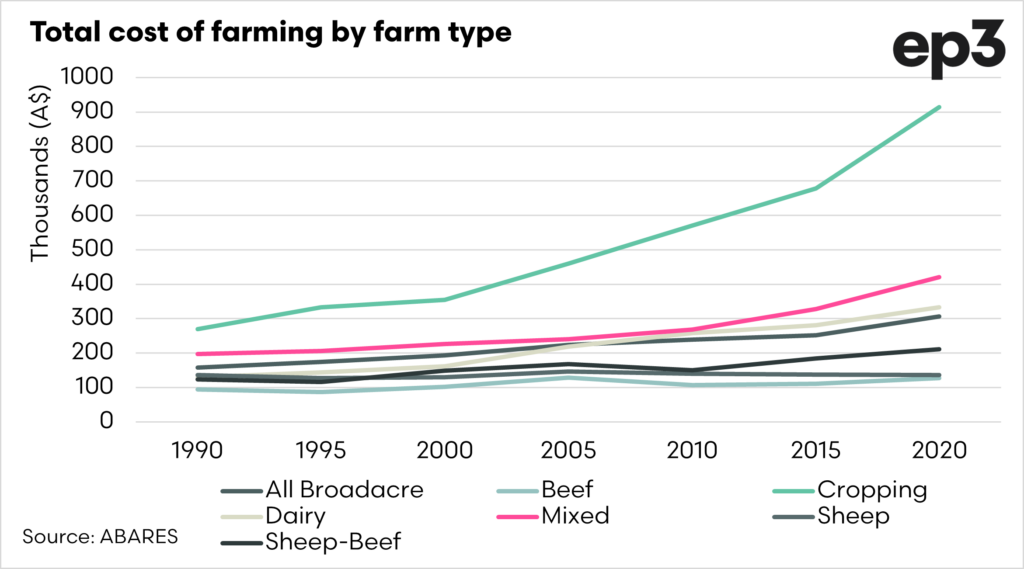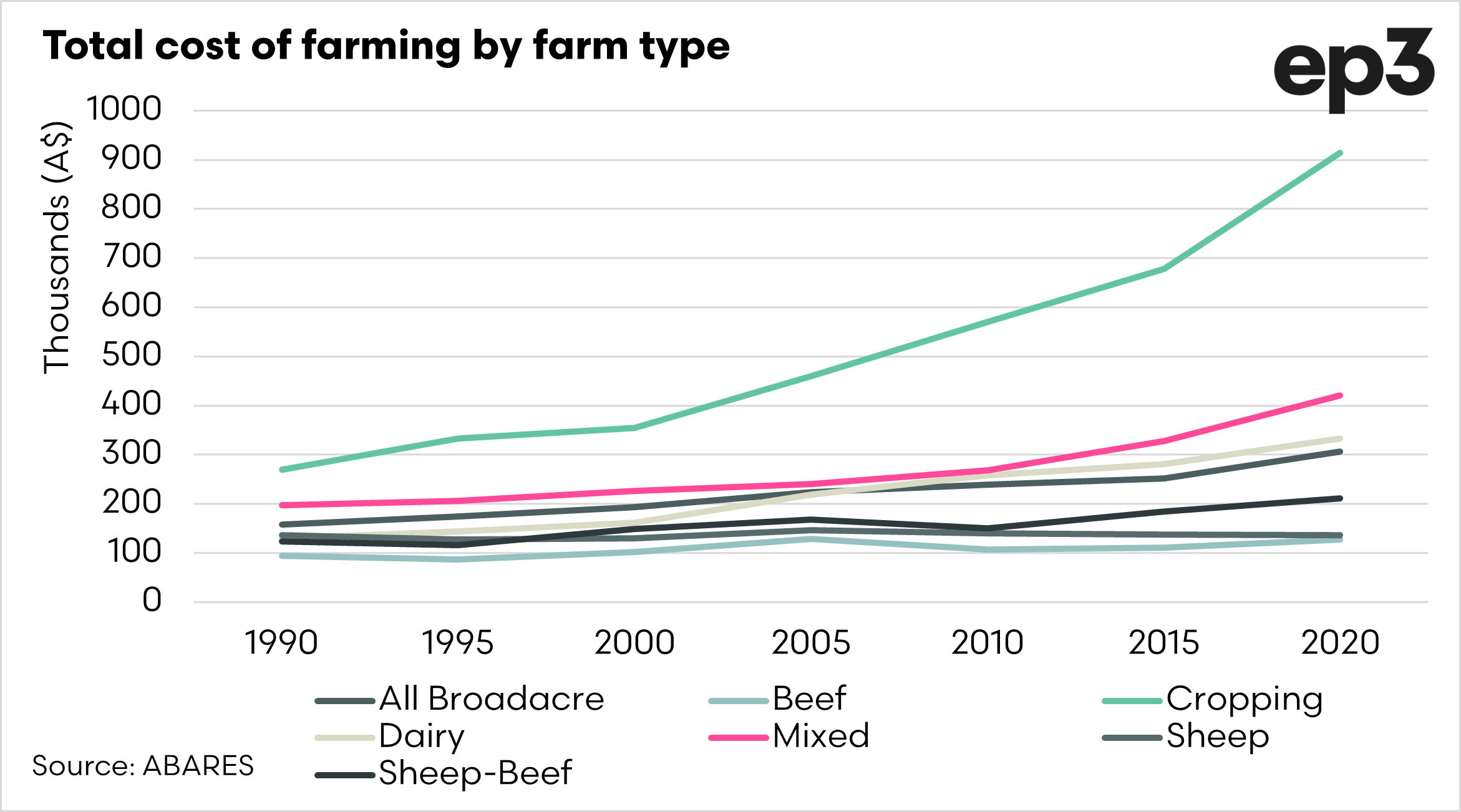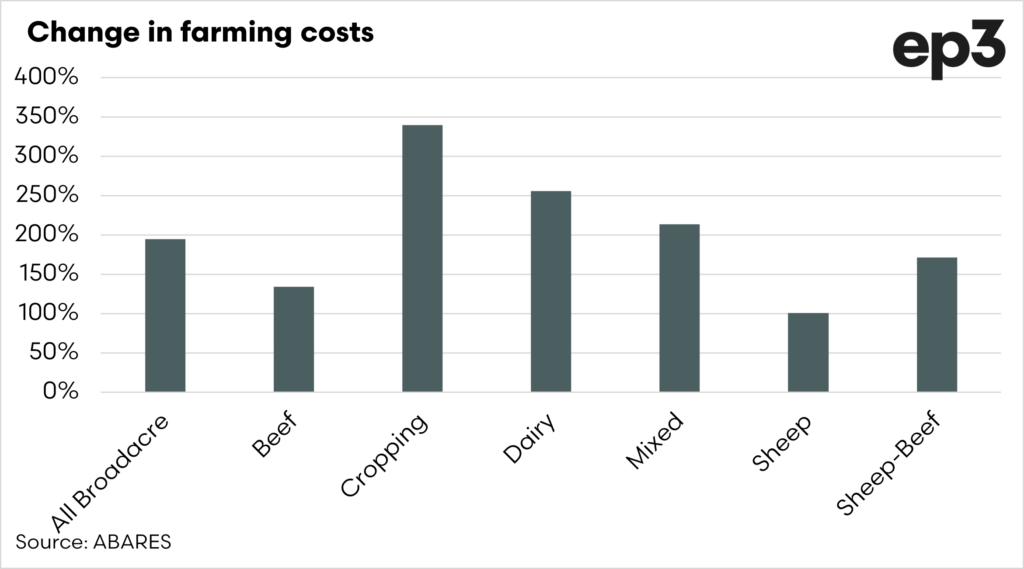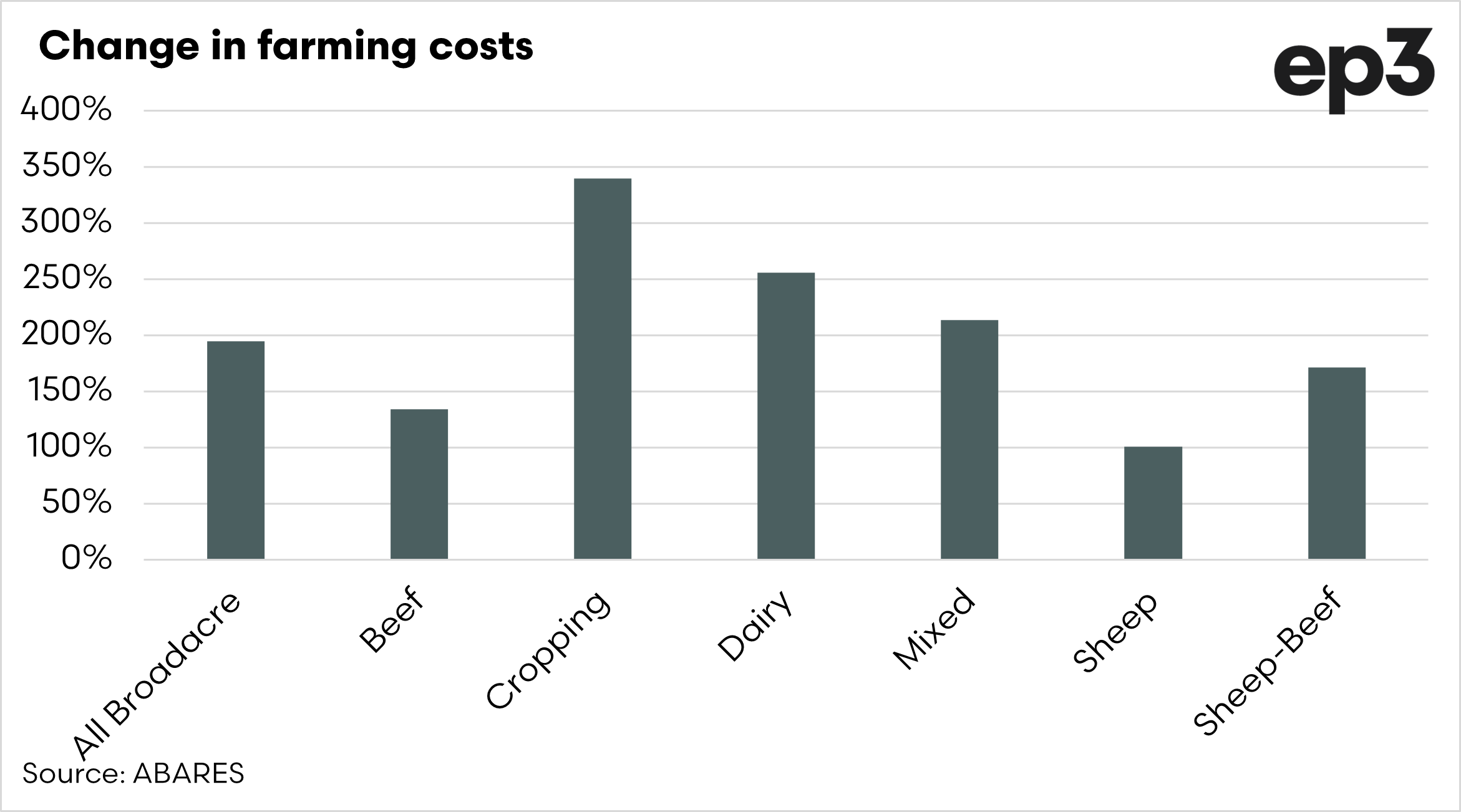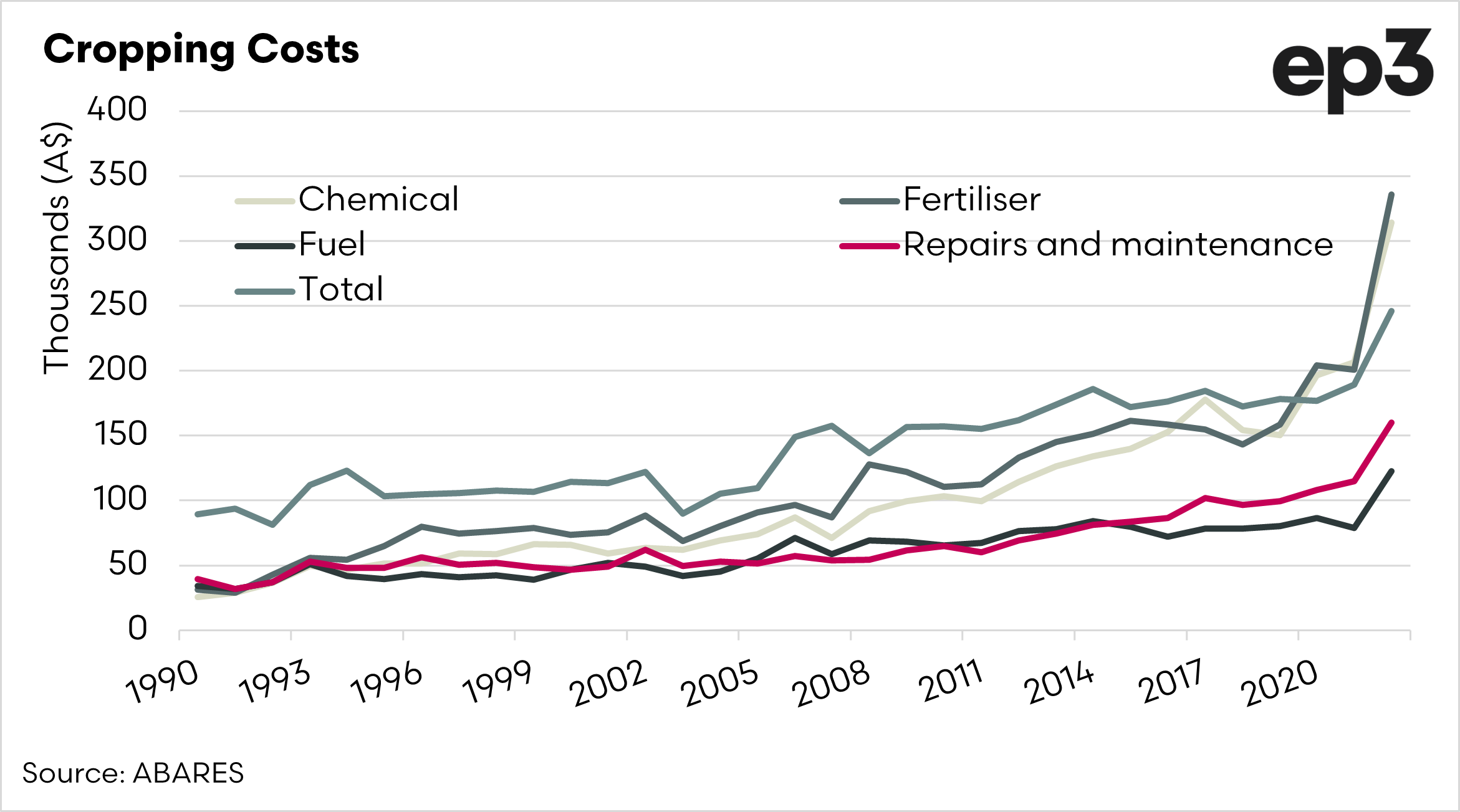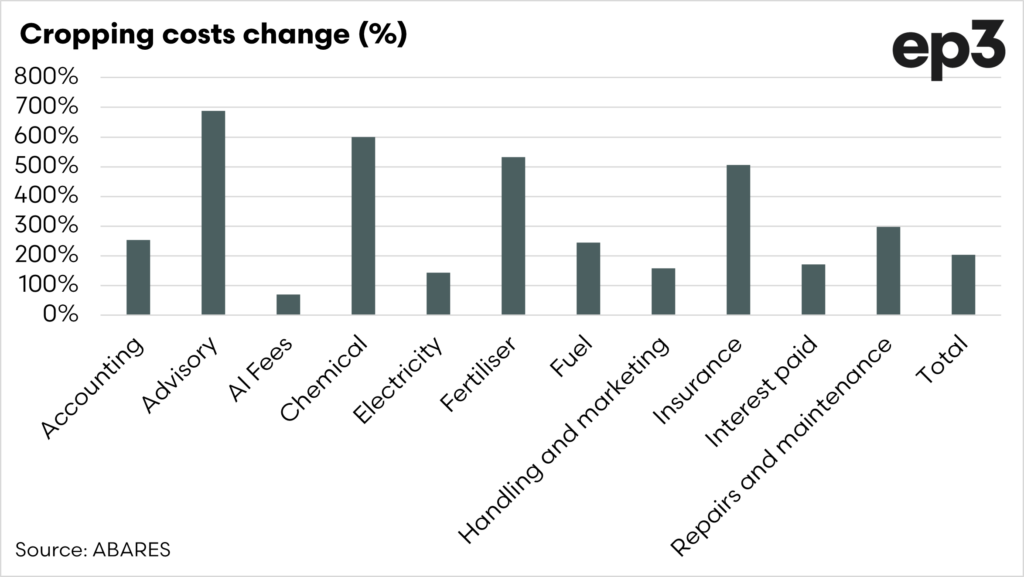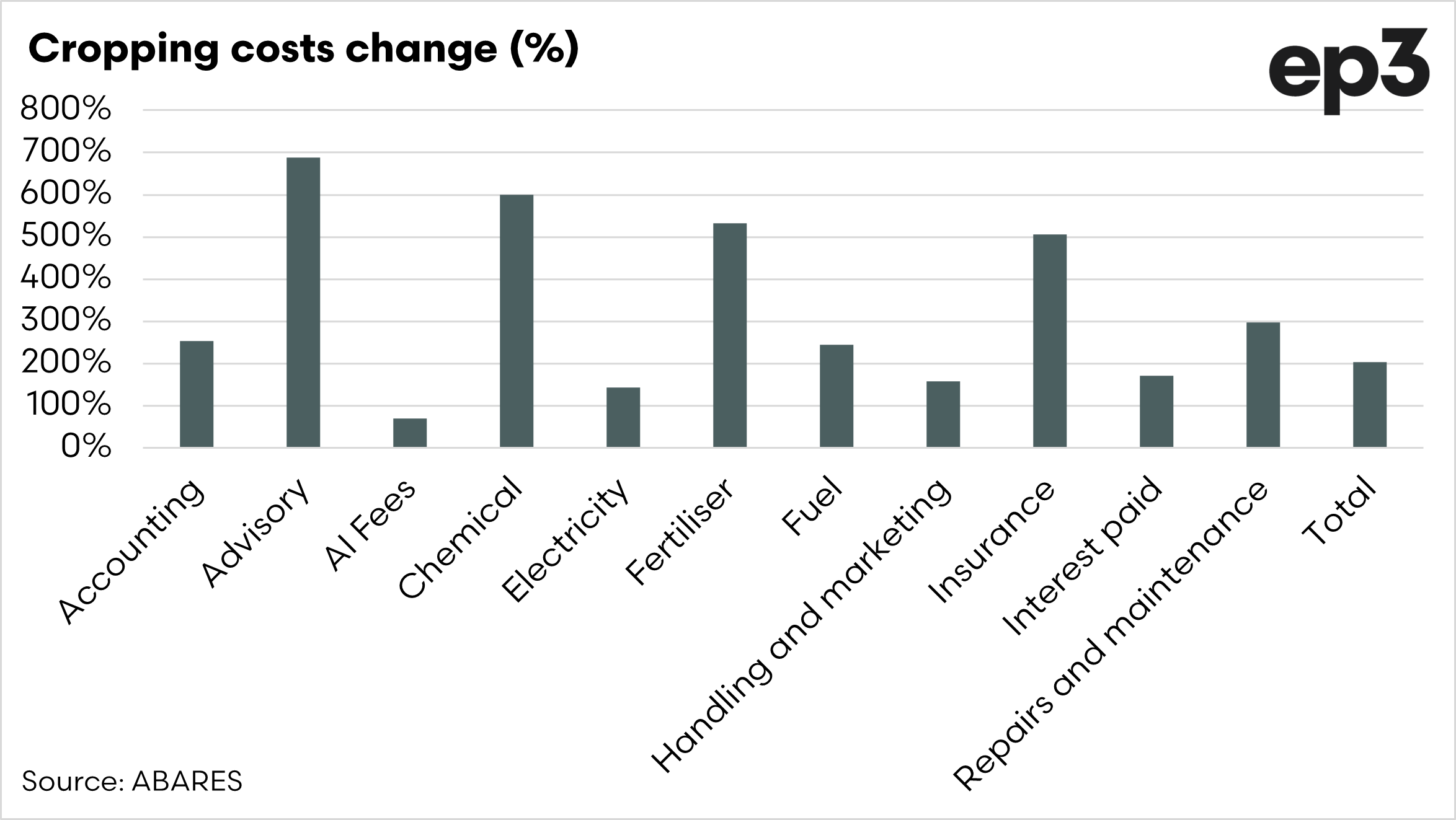Which is the costliest farming enterprise?
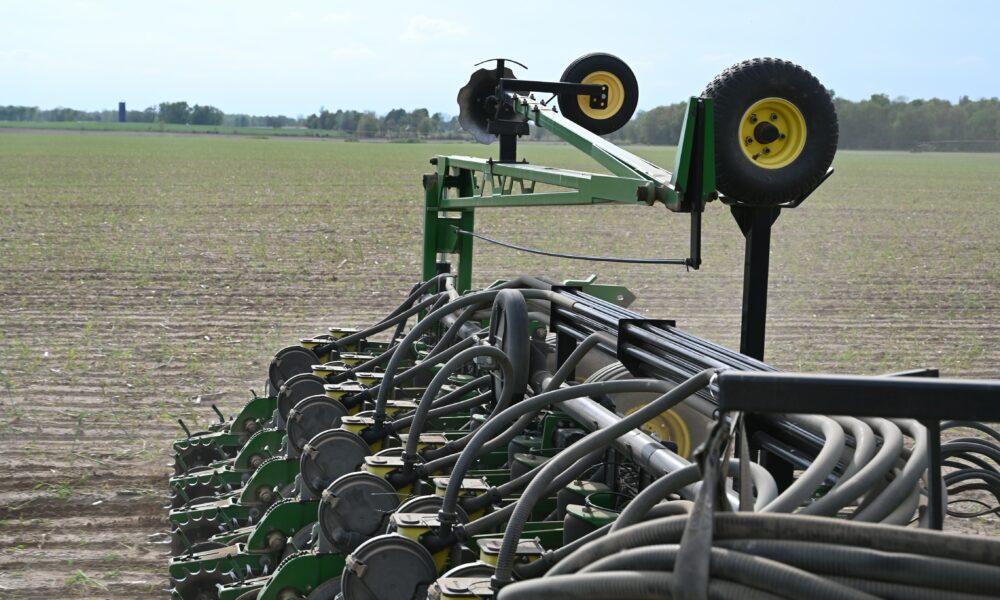
The Snapshot
- Profit is a function of output minus input.
- The cost of farming is increasing. However, the highest increase has been in cropping.
- The last two years have seen a significant increase in costs, mainly attributed to higher fertilizer and chemical costs.
- Other areas of large increase (% wise) have been insurance, repairs/maintenance and advisory services.
- It is important to keep an eye on both the cost of production and the price achieved for produce.
The Detail
How do you make a million from farming? Start with two million.
There tends to be a focus on the output of agriculture, how much we produce and how much we sell it for. The reality is that profit is a function of output minus input.
We all know the cost of farming is increasing, but by how much, and where are the costs? Let’s look into it.
The chart below uses data from ABARES farm surveys. In order to remove the seasonal volatility in costs, I have averaged over five-year periods.
What we can see instantly from this is that the cost* of farming has increased significantly for cropping farmers compared to other
The chart below displays the change in costs from the period 1990/95 and the period 2020 to the present. The cost of cropping has increased by over 300% in this time, with dairy following behind at approximately 250%.
The sheep industry, at just over 100% increase in costs, is the winner in keeping costs down.
So where are the increased costs coming from in cropping?
It probably doesn’t come as a major surprise, but in recent years, chemicals and fertilizer have contributed the largest to the increase in costs. However, the cost of repairs and maintenance has also increased considerably.
The chart below displays the change in the selected costs between 1990/95 and 2020 to the present.
The biggest percentage cost increase is advisory services, which have grown at a whopping 688%; however, is still a small cost at less than 1%.
The big drivers are chemicals and fertilizer, which contribute the lion’s share of the cost increase. Insurance and repairs/maintenance are notable in their increases as well.
Suppose the spokespeople are interested in policy to assist in reducing costs for farmers. In that case, these are the areas where they may wish to focus on, as they have significant impacts on the profitability of farmers.

